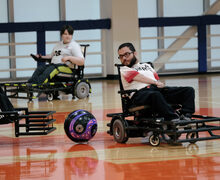Orland: New York’s standardized testing divide should spur revamped, fair system
In Syracuse and across New York state, parents have a tough decision to make: throughout the month of April their kids will either go to school to sit in a classroom to learn or go to prove their worth on a state standardized test.
Betty Rosa, the chancellor of the Board of Regents — the highest ranking education official in the state — spoke out last week against the standardized testing movement and said that if she had kids of testing age, she would have them sit out the exams. But, in New York City at least, public school teachers and principals echoing the same message are being told by the city’s Department of Education to not have any influence on what parents decide is best for their children.
Herein lies the problem: the system lacks uniformity. In a single state, there is a rift in beliefs between those who make the decisions for individuals: the teachers and the officials.
The effects of this lack of cohesiveness within the bureaucracy are even seen on college campuses. As colleges yearn to attract socioeconomically and racially diverse student applicants, they can rarely boast an achievement of truly diverse populations. This is arguably because the students these universities hope to obtain have been sitting in deteriorating classrooms and subjected to taking standardized tests that do not accurately measure their intellect rather than working toward personalized educational goals.
The conflict is only a supplement to a New York state education system that is a stranger to neither substandard educational facilities nor arbitrary standardized evaluations. And these traits put New York is in a prime position to find unity and acknowledge a problem in which its children are defined by numbers and its teachers are nothing more than the average of students’ test scores.
But progress can be made if comprehensive ways of evaluating students to place them on a path to success are secured rather than maintaining high-pressure expectations for students that may be unable to learn in environments that are not crafted with their best interests at heart.
If teachers, who are judged professionally on their students’ performance on standardized tests, are discouraging parents from signing up their kids sends an incredibly strong message: These tests are not worth it. The tests’ bias toward white, able, affluent students show lapses in a system where teachers should teach lasting lessons that make students better human beings, rather than how to bubble in a Scantron.
Leveling the playing field in this way should mean that being accepted to a university is the hardest part of the process for minority students who are vital assets to college campuses. And with more diversity on campus comes acknowledgement of varied interest, more heterogeneous perspectives and a tendency for open dialogues about social issues that plague institutions across the nation.
So while minority students may be accepted to many illustrious universities around the country, they often do not follow through on attending because they are not being properly educated on how to get an education. The Hechinger Report found that up to 40 percent of low-income students who have been accepted to college do not end up attending, naming the cost of higher education, overwhelming paperwork and fear of being ostracized on campus as the main reasons.
“The transition from high school to college is not an easy one for anyone, and when you factor in other challenges like poverty and institutional racism, those students are trying to negotiate a lot at once, and they need a strong support system and resources,” said Christina Parish, director of Syracuse University’s Project Advance, a program that poses as an alternative to Advanced Placement in which students take courses to earn college credit.
The Project Advance program exposes high school students to the academic responsibilities that come along with higher education. There isn’t a looming standardized test at the end of the year, but rather the transfer of an actual class onto a transcript that factors into the student’s college GPA in which participating teachers can evaluate students based on their qualities rather than quantitative results.
Some colleges have been implementing similar programs and they seem to be working: 255 4-year colleges and universities have seen minority graduation rates increase by 8 percent in the last ten years.
“What we find is that if students are provided an opportunity to participate in these advanced courses, many times they can and do rise to the challenge because they aren’t just studying to a test and can take more ownership over their own education,” Parish said.
These kinds of resources contribute to the dynamics of student body by ensuring that colleges are places of exposure both in and out of the classroom. But for this practice to become uniform across New York state and beyond, the foundational K-12 years must be addressed to establish a rhetoric for a system that teaches students of all backgrounds how to get to where they want to be based on their own interests rather than the percentile school officials hope they score in.
Luckily, The New York Times reports, a fifth of the state’s eligible students — or 220,000 kids — chose not to test in 2015. But moving forward, if New York can create a regional education standard which recognizes that fairness is integral to equality, disadvantaged students can be exposed to encouragement and the guidance to opt-out of a system that is setting them up to fail.
Joanna Orland is a freshman newspaper and online journalism major. Her column appears weekly. She can be reached at jorland@syr.edu.
Published on March 31, 2016 at 12:39 am




